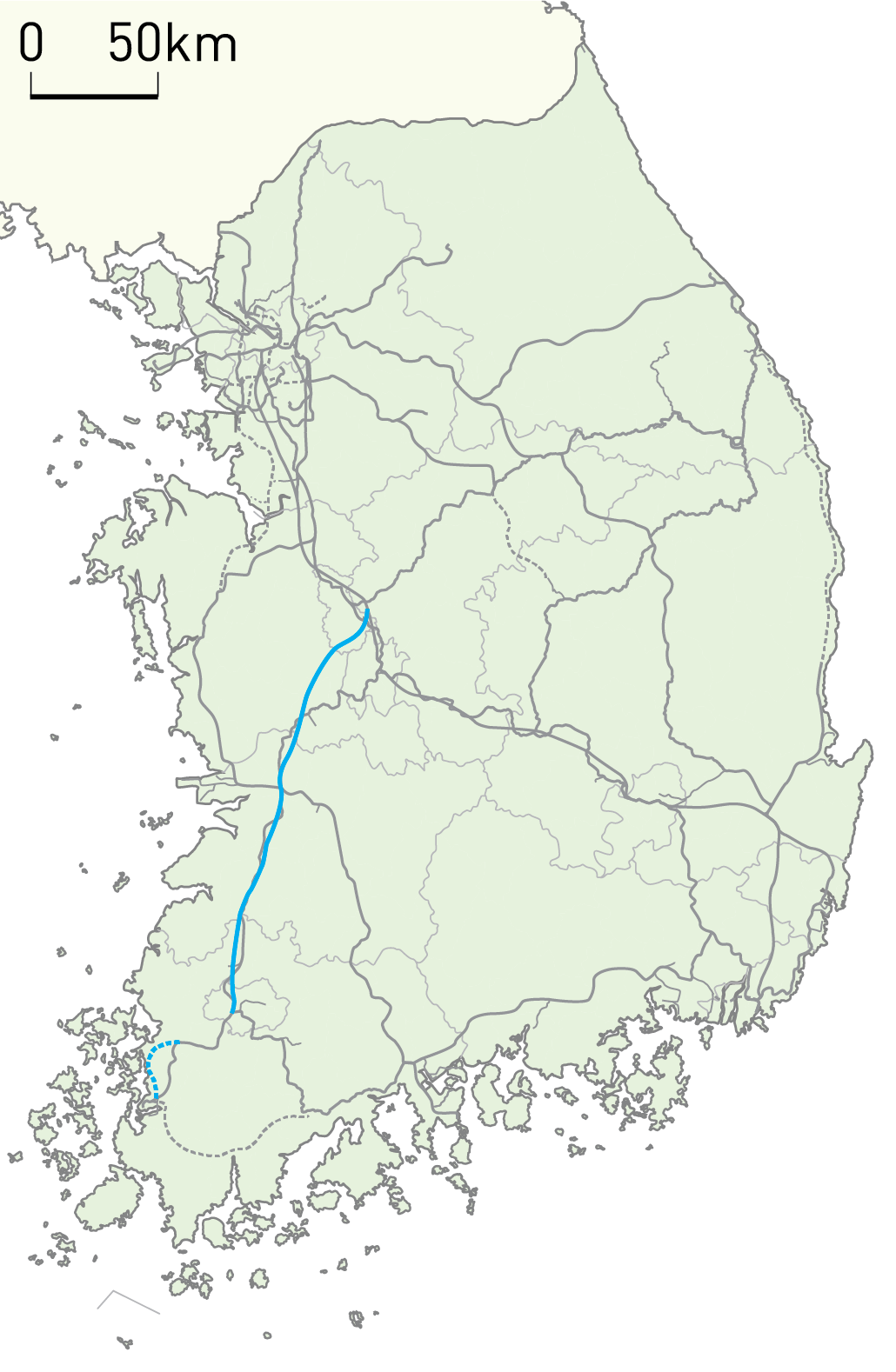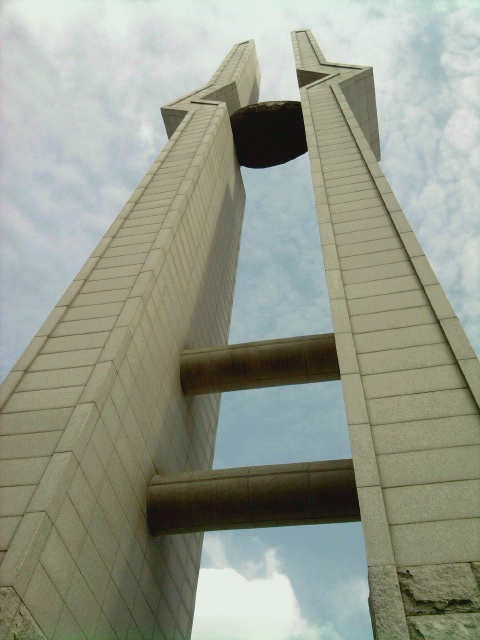|
Iksan Station
Iksan station is on South Korea's high-speed KTX railway network, 243 km south of Yongsan station. History The station opened on January 1, 1915, and KTX trains on the Honam Line began services on April 1, 2004. The most notable incident to occur at this station was an explosion that occurred at 9:15 p.m. on November 11, 1977. The explosion occurred as dynamite being transported from Incheon to Gwangju caught alight. The station was then known as "Iri station" (이리역), ''Iri'' being Iksan's former name. Services Iksan station serves KTX trains on the Honam high-speed railway and the normal speed Honam Line. It also has express services and local services on the normal speed Honam Line. Trains on the Jeolla and Janghang Lines also call at this station. See also *Transportation in South Korea Transportation in South Korea is provided by extensive networks of railways, highways, bus routes, ferry services and air routes that traverse the country. South Kor ... [...More Info...] [...Related Items...] OR: [Wikipedia] [Google] [Baidu] |
Iksan
Iksan ( ko, 익산; ) is a city and major railway junction in North Jeolla Province, (commonly transliterated as Jeollabuk-do or Chollabuk-do) South Korea. The city center and railway junction was formerly called "Iri" (), but merged with Iksan County (''Iksan-gun'') in 1995. The railway junction is located at the point where Jeolla, Janghang and Gunsan Lines meet the Honam Line and is served by frequent train service to/from Seoul, Daejeon, Gwangju, Mokpo, Jeonju, Suncheon, and Yeosu. Jeonbuk National University Iksan campus (before, it was Iksan National College), the Won Buddhism Graduate School, Wonkwang Health Science College, and Wonkwang University are all located in Iksan. This city is called “The City of Jewelry." The Iksan Jewelry Museum opened in May 2002 next to a Dinosaur museum. In late November 2006, Korean authorities quarantined a farm in Iksan and began culling poultry and livestock within a 3-kilometer radius to contain an outbreak of the H5N1 bird flu v ... [...More Info...] [...Related Items...] OR: [Wikipedia] [Google] [Baidu] |
Honam Line (KTX)
The Honam high-speed railway, also known as Honam HSR, is a high-speed rail between Osong (on the existing Gyeongbu high-speed railway) and Mokpo in South Korea. The line is a part of Korail's Korea Train Express (KTX) system, accelerating Seoul–Mokpo and Seoul–Gwangju KTX high-speed services which currently use the existing conventional Honam Line. On April 1, 2015, the line was inaugurated by the South Korean President Park Geun-hye with the attendance of 1200 invited guests and members of the public at Gwangju Songjeong Station in Gwangju, the line's terminus. The line diverges from Osong station on the Gyeongbu high-speed railway, and stops at Gongju, Iksan, Jeongeup Stations. Journey times between Seoul and Gwangju has been cut from 2 h 40 min to just 90 min, making daily commuting possible. The Honam HSR is intended to bring business, and economic opportunities to the province of Jeollanam-do, which has seen slower development than other parts of South Korea. The line has ... [...More Info...] [...Related Items...] OR: [Wikipedia] [Google] [Baidu] |
Railway Stations Opened In 1915
Rail transport (also known as train transport) is a means of transport that transfers passengers and goods on wheeled vehicles running on rails, which are incorporated in tracks. In contrast to road transport, where the vehicles run on a prepared flat surface, rail vehicles (rolling stock) are directionally guided by the tracks on which they run. Tracks usually consist of steel rails, installed on sleepers (ties) set in ballast, on which the rolling stock, usually fitted with metal wheels, moves. Other variations are also possible, such as "slab track", in which the rails are fastened to a concrete foundation resting on a prepared subsurface. Rolling stock in a rail transport system generally encounters lower frictional resistance than rubber-tyred road vehicles, so passenger and freight cars (carriages and wagons) can be coupled into longer trains. The operation is carried out by a railway company, providing transport between train stations or freight customer facili ... [...More Info...] [...Related Items...] OR: [Wikipedia] [Google] [Baidu] |
Railway Stations In North Jeolla Province
Rail transport (also known as train transport) is a means of transport that transfers passengers and goods on wheeled vehicles running on rails, which are incorporated in tracks. In contrast to road transport, where the vehicles run on a prepared flat surface, rail vehicles (rolling stock) are directionally guided by the tracks on which they run. Tracks usually consist of steel rails, installed on sleepers (ties) set in ballast, on which the rolling stock, usually fitted with metal wheels, moves. Other variations are also possible, such as "slab track", in which the rails are fastened to a concrete foundation resting on a prepared subsurface. Rolling stock in a rail transport system generally encounters lower frictional resistance than rubber-tyred road vehicles, so passenger and freight cars (carriages and wagons) can be coupled into longer trains. The operation is carried out by a railway company, providing transport between train stations or freight customer faciliti ... [...More Info...] [...Related Items...] OR: [Wikipedia] [Google] [Baidu] |
Transportation In South Korea
Transportation in South Korea is provided by extensive networks of railways, highways, bus routes, ferry services and air routes that traverse the country. South Korea is the third country in the world to operate a maglev train, which is an automatically run people mover at Incheon International Airport. History Development of modern infrastructure began with the first Five-Year Development Plan (1962–66), which included the construction of 275 kilometers of railways and several small highway projects. Construction of the Gyeongbu Expressway, which connects the two major cities of Seoul and Busan, was completed on 7 July 1970. The 1970s saw increased commitment to infrastructure investments. The third Five-Year Development Plan (1972–76) added the development of airports, seaports. The Subway system was built in Seoul, the highway network was expanded by 487 km and major port projects were started in Pohang, Ulsan, Masan, Incheon and Busan. The railroad network experie ... [...More Info...] [...Related Items...] OR: [Wikipedia] [Google] [Baidu] |
Gwangju
Gwangju () is South Korea's sixth-largest metropolis. It is a designated metropolitan city under the direct control of the central government's Home Minister. The city was also the capital of South Jeolla Province until the provincial office moved to the southern village of Namak in Muan County in 2005 because Gwangju was promoted to a metropolitan city and was independent of South Jeolla province. Its name is composed of the words ''Gwang'' () meaning "light" and ''Ju'' () meaning "province". Gwangju was historically recorded as ''Muju'' (), in which "Silla merged all of the land to establish the provinces of Gwangju, Ungju, Jeonju, Muju and various counties, plus the southern boundary of Goguryeo and the ancient territories of Silla" in the ''Samguk Sagi.'' In the heart of the agricultural Jeolla region, the city is also famous for its rich and diverse cuisine. History The city was established in 57 BC. It was one of the administrative centers of Baekje during the Three ... [...More Info...] [...Related Items...] OR: [Wikipedia] [Google] [Baidu] |
Incheon
Incheon (; ; or Inch'ŏn; literally "kind river"), formerly Jemulpo or Chemulp'o (제물포) until the period after 1910, officially the Incheon Metropolitan City (인천광역시, 仁川廣域市), is a city located in northwestern South Korea, bordering Seoul and Gyeonggi to the east. Inhabited since the Neolithic, Incheon was home to just 4,700 people when it became an international port in 1883. Today, about 3 million people live in the city, making it South Korea's third-most-populous city after Seoul and Busan. The city's growth has been assured in modern times with the development of its port due to its natural advantages as a coastal city and its proximity to the South Korean capital. It is part of the Seoul Capital Area, along with Seoul itself and Gyeonggi Province, forming the world's fourth-largest metropolitan area by population. Incheon has since led the economic development of South Korea by opening its port to the outside world, ushering in the modernization o ... [...More Info...] [...Related Items...] OR: [Wikipedia] [Google] [Baidu] |
Jeollabuk-do
North Jeolla Province (; ''Jeollabuk-do''), also known as Jeonbuk, is a province of South Korea. North Jeolla has a population of 1,869,711 (2015) and has a geographic area of 8,067 km2 (3,115 sq mi) located in the Honam region in the southwest of the Korean Peninsula. North Jeolla borders the provinces of South Jeolla to the south, North Gyeongsang and South Gyeongsang to the east, North Chungcheong to the northeast, and South Chungcheong to the north. Jeonju is the capital and largest city of North Jeolla, with other major cities including Iksan, Gunsan, and Jeongeup. North Jeolla was established in 1896 from the province of Jeolla, one of the Eight Provinces of Korea, consisting of the northern half of its mainland territory. History During the Proto-Three Kingdoms period, Jeolla region was the center of the Mahan confederacy among Samhan. There were 15 tribal countries out of 54 in the region. During the period of the Three States, this region came to belong to Baekje w ... [...More Info...] [...Related Items...] OR: [Wikipedia] [Google] [Baidu] |
Korail
The Korea Railroad Corporation (Korean: 한국철도공사, Hanja: ), branded as KORAIL (코레일, officially changed to in November 2019), is the national railway operator in South Korea. Currently, KORAIL is a public corporation, managed by Ministry of Land, Infrastructure and Transportation. KORAIL operates intercity/regional, commuter/metro and freight trains throughout South Korea, and has its headquarters in Daejeon. History Historically, the South Korean railway network was managed by the ''Railroad Administration Bureau'' of the Ministry of Transportation before 1963. On 1 September 1963, the bureau became an agency that was known as ''Korean National Railroad'' (KNR) in English. In the early 2000s, split and public corporatization of KNR was decided by the South Korean government, and in 2003, KNR adopted the current KORAIL logo in blue to prepare corporatization. On 1 January 2005, KNR was split into ''Korea Railroad Corporation'' (KORAIL), which succeeded ra ... [...More Info...] [...Related Items...] OR: [Wikipedia] [Google] [Baidu] |
Janghang Line
The Janghang Line is a railway line serving South Chungcheong Province in South Korea. The line connects Cheonan (on the Gyeongbu Line) to the railway junction city of Iksan. The Janghang Line is served by frequent Saemaeul-ho and Mugunghwa-ho passenger train services between Seoul and Iksan. There is also a link from Asan station to the KTX network at Cheonan-Asan station. History The original Janghang Line was opened along its full length between Cheonan and Janghang by the Chosen Gyeongnam Railway on June 1, 1922. Upgrade The entire Janghang Line is being electrified and double-tracked and upgraded for higher speeds with a straighter alignment. Work started in 1997 from Cheonan. By the end of 2008, the new alignment was in service from Cheonan via Asan and Hongseong to Sinseong, from Jupo to Nampo, and from Ganchi to Janghang, and electrification was put in service on the first 19.4 km between Cheonan and Sinchang, after Asan, on December 15, 2008. The 17.1&n ... [...More Info...] [...Related Items...] OR: [Wikipedia] [Google] [Baidu] |



%2C_1890.jpg)